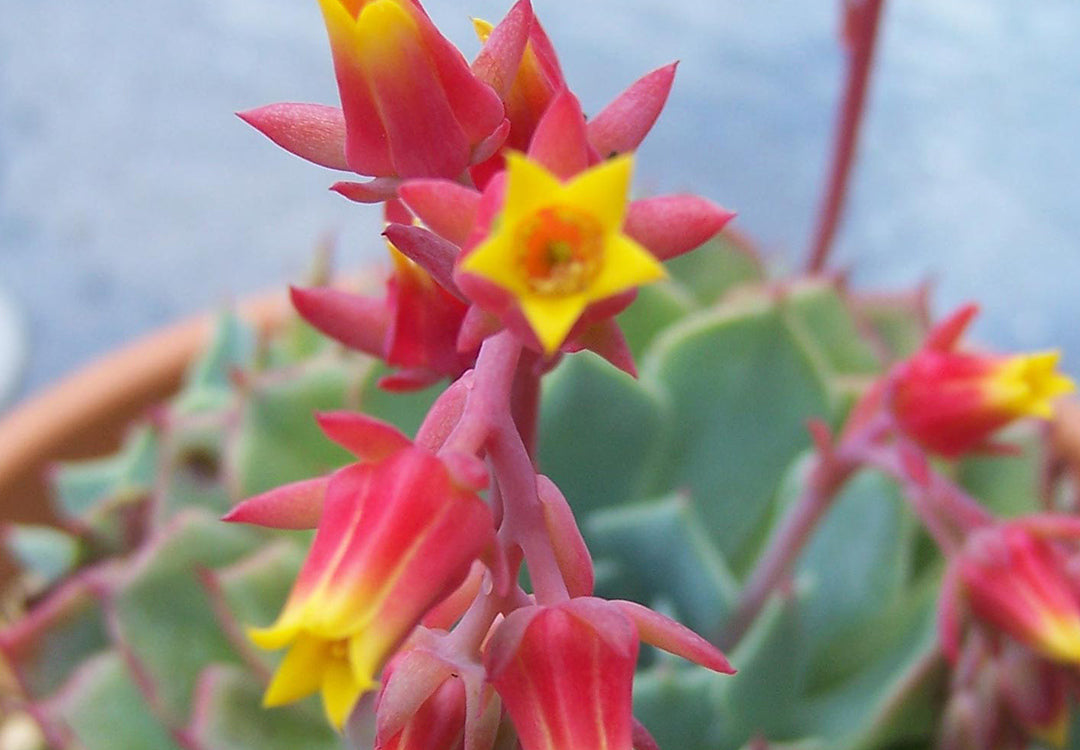
Crassulas, stonecrops or hen-and-chicks, are the typical plant one thinks of when we hear the word “succulent”. In fact, not all succulent plants are crassulas, and not all crassulas are succulent (though the vast majority are).
They are usually desert dwellers that love plenty of sun and well-draining soil; just don’t keep their feet wet for too long as this is the quickest way to kill them.
With that being said, there are other varieties that thrive in cooler and wetter environments. Crassula helmsii, for example, is an aquatic variety originally found in Australia and New Zealand that has taken off as a noxious weed in the UK where it finds plenty of soggy soil.
Succulent plants have the ability to store water in plant parts, especially in the leaves. Technically all plants store water, but you know a succulent when you see engorged parts on healthy plants such as the leaves of crassula varieties.
Contrary to popular opinion, most of the varieties of Crassulaceae we grow at home love a fair bit of water as long as they’re allowed to dry out completely between waterings. They also don’t mind some partial shade, and full sun can actually stress the poor guys depending on the species and climate.
Sometimes heat stress causes variegation (colour differentiation in the leaves) which can make them look even cooler.
The Portulacaria genus is edible, however there are poisonous varieties such as the classic jade plant, Crassula ovata. Both types are very similar in appearance, so it’s best to leave these plants alone unless you’re very absolutely positive with your I.D.
Description
Many varieties have a rosette habit with leaves clustering to form a spiral due to short nodes, similar to a dandelion or agave. Other varieties have longer nodes such as the jade plant, so are less rosette-like.
They can be found fulfilling a ground covering role, but there are varieties that grow quite large with a relatively complex branching structure if left for long enough.
Leaves can hold a bit of meristematic tissue when plucked correctly, which will grow roots and eventually a clone of the mother plant under ideal conditions.

Meristematic tissue is sometimes retained on a leaf that has snapped off a branch, which can potentially then grow into a clone of the mother. Image source

Goldmoss stonecrop Sedum acre seed pods are dried and dehiscent; pods come in different shapes depending on the species and are not all star-shaped. Image source
Flowers, Fruits & Leaves
Sepals: Usually 4 or more radially symmetrical sepals, in one or two whorls.
Petals: Generally the same as sepals, or half as many.
Reproductive: Bisexual flowers with an equal number of stamens to petals, or double the number of stamens to petals in one or two whorls. Simple pistils consisting of a single carpel.
Fruit: Usually a dehiscent capsule.
Seeds: Small, sometimes elongate.
Leaves: Generally succulent and sessile. They may be thick or thin, smooth or furry.
Noteworthy Types
The family is broken into three subfamilies, each hosting multiple genera: Crassuloideae, Kalanchoöideae and Sempervivoideae.
The jade “money tree” Crassula ovata of the Crassuloideae subfamily is associated with wealth and abundance and is a traditional gift for business owners to place in the entrance of the premises.

The jade plant, or the money tree Crassula ovata. Image source
Kalanchoe tomentosa in the Kalanchoöideae subfamily has furry, succulent leaves.

Kalanchoe tomentosa. Image source
Echeveria spp. may be confused with Sempervivum spp., though they are both in the Sempervivoideae subfamily.

Echeveria elegens is in the Sempervivoideae subfamily, but not in the Sempervivum genus. Image source
Conclusion
It’s fine to call members of the Crassulaceae family “succulents”, because they mostly are, however this is a low-resolution term because it doesn’t differentiate them from other succulent plants that are not closely related, such as aloe vera plants which are in the Asphodelaceae family or cacti in the Cactaceae family.
If you haven’t already read my articles on plant identification and scientific names, I recommend reading those to get a broader picture of the topic. Alternatively, you can browse some of my other plant families, subfamilies and genera below.
